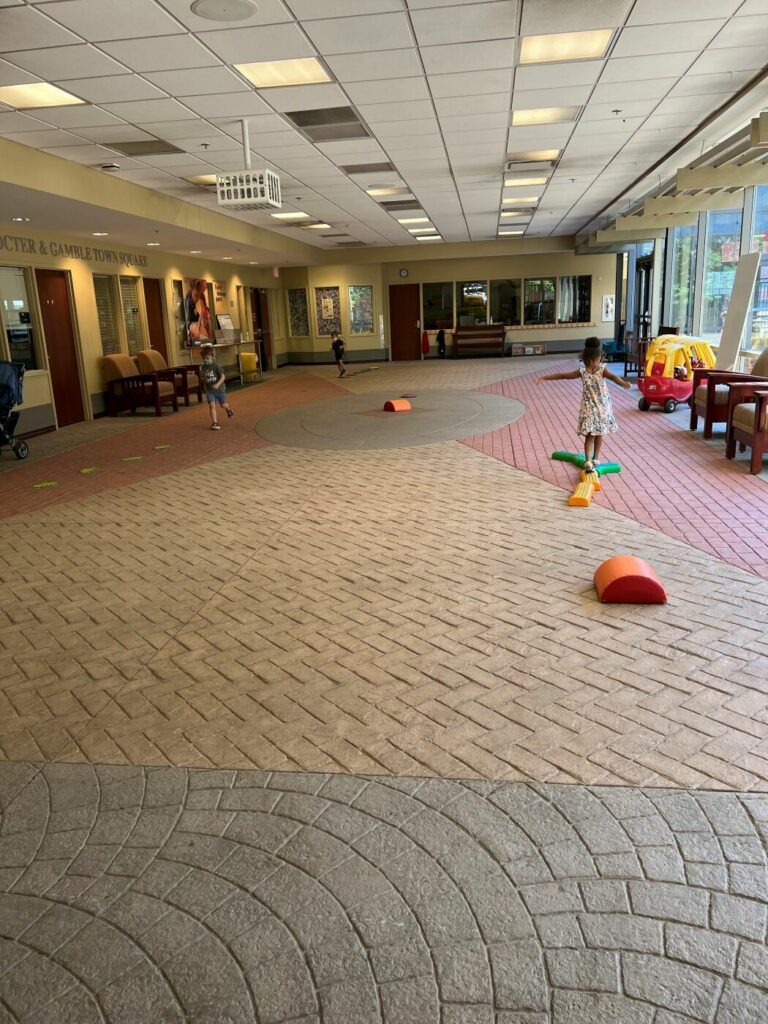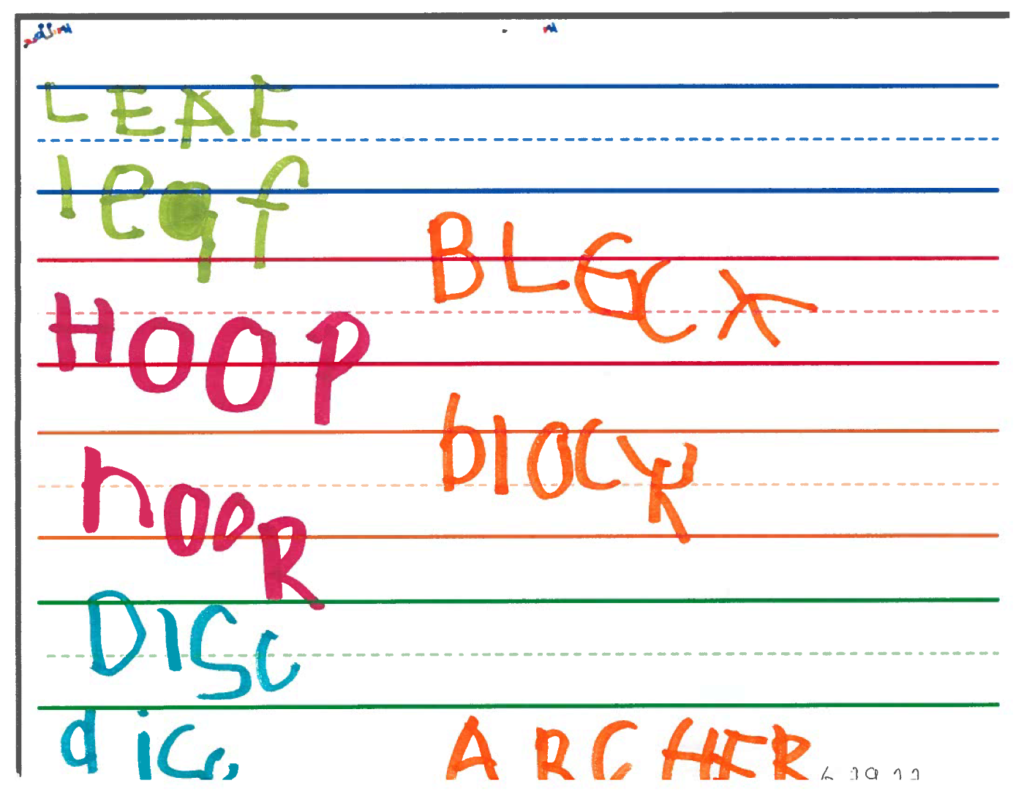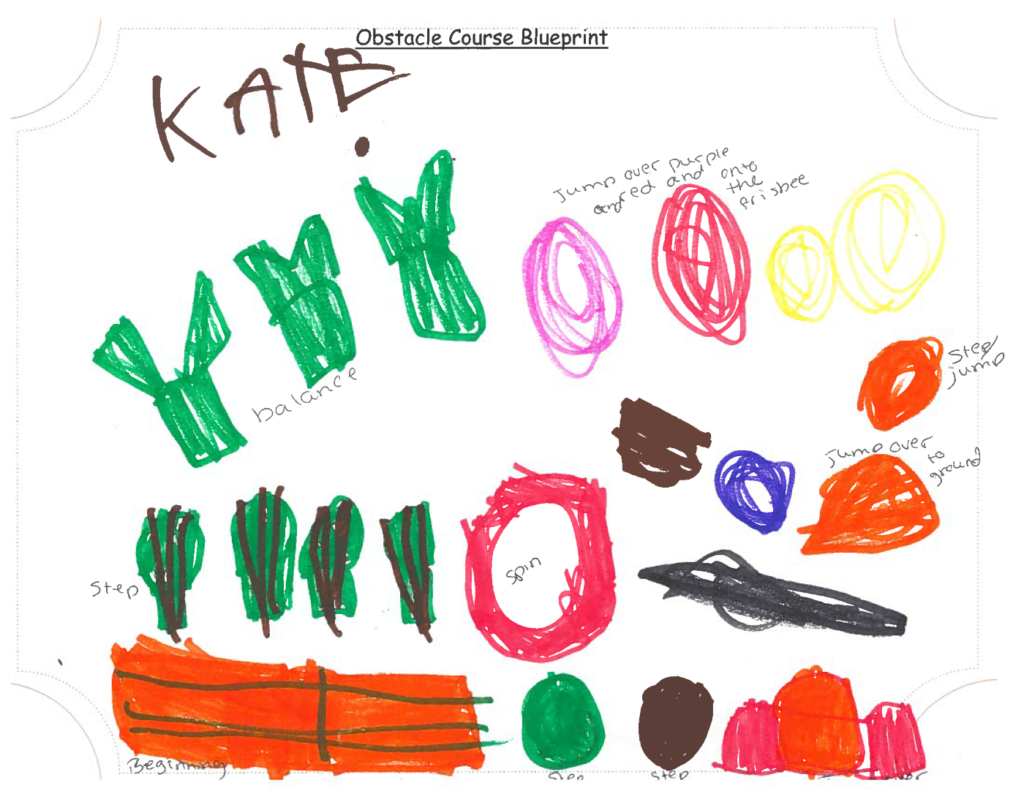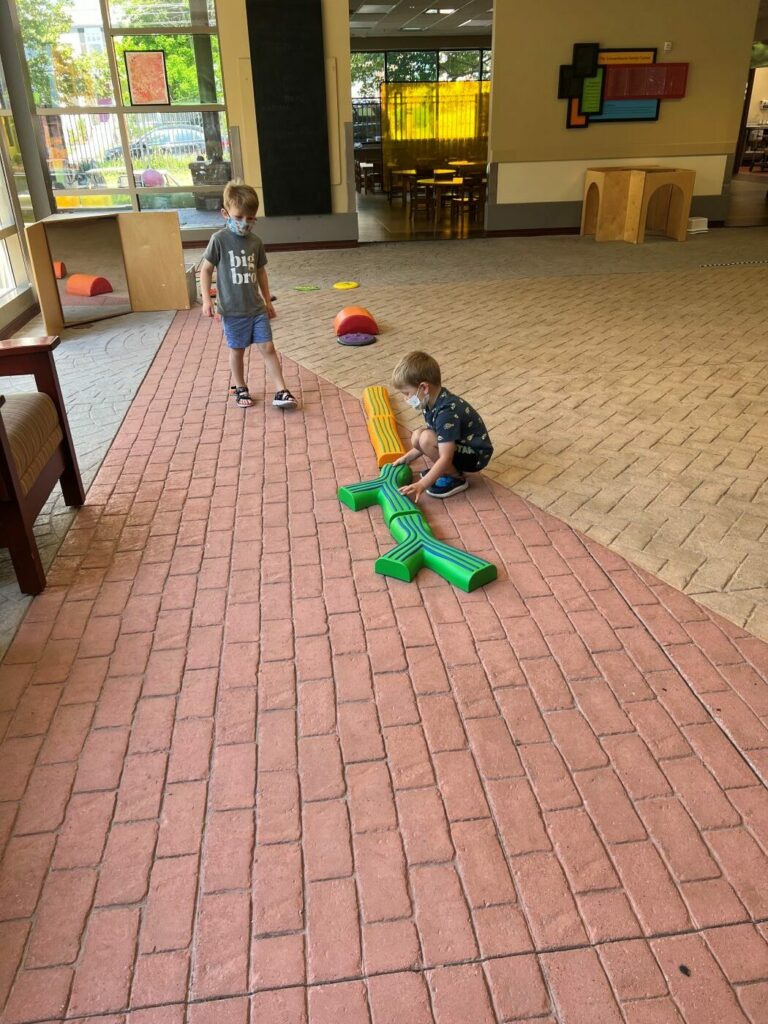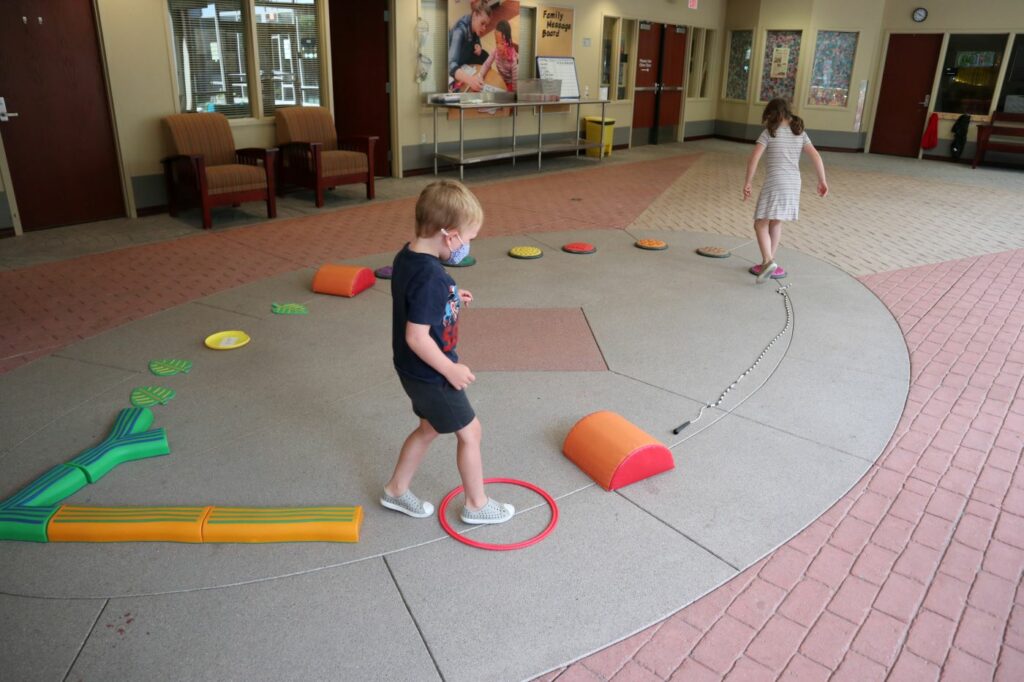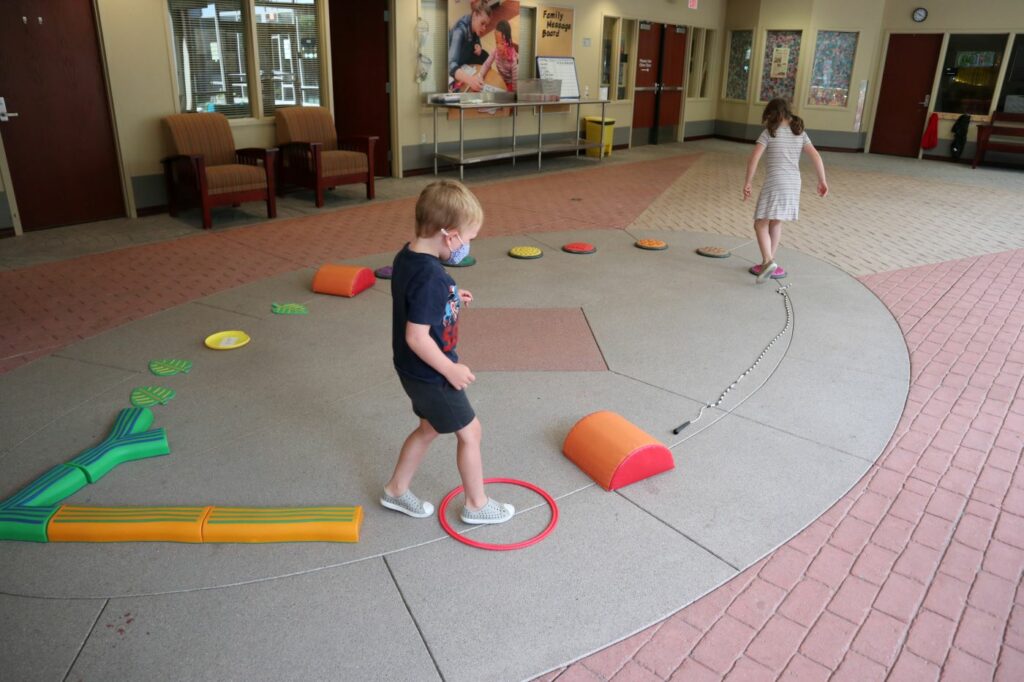
As the summer heat grew, children and teachers had to stay indoors. This simple change in Ohio’s weather generated a love of planning, creating, and implementing obstacle courses. In a previous art project, children created blueprints. When the building courses began, children asked for the blueprint template to “plan out” their work. Teachers added lists of the obstacle course materials to the writing table for children engage and learn the different names of the materials for course design. Children began to draw “maps” or their course blueprints which allowed them to access past learning knowledge.
Teachers set up simple obstacle courses first and talked through the process they used with the children to give them a general understanding of how to make these work. In small groups of 2-3, children then began to create obstacle courses. First, they kept their courses small utilizing the circle time rug but wanted to have a larger space to work in. The moved into the larger town square space in the middle of the school but this posed a challenge as the space was so large and the child had difficulty understanding how to keep their obstacle course together. Teachers problem-solved with the children to discuss this challenge and what they could do differently; they then modeled how to add activities, like lunges and jumping jacks, between stations to utilize the larger space. While running the course some children found their original blueprint had materials too close together to do the large muscle movement intended. Teachers talked through live-time adjustments to the course to better meet physical needs. Children’s’ ability to problem-solve and implement solutions grew during this process.
Working on a team presented many opportunities to practice conversations and social skills with their peers by incorporating everyone’s ideas and not just their own. Some took turns back and forth adding elements while others negotiated where items should be placed in the course. Children worked together to problem-solve and implement solutions when an idea did not work successfully.
Once the small group of children created a “fun” course, they wanted to invite their peers to try it out but wanted to make sure it worked. The designers ran the course several times and when they felt confident with the order of materials, they welcomed peers to try it. The designers gave instructions to their peers about what they should do at different locations while their peers were running the course. This allowed them to support those completing it.
Materials
- Balance beam logs
- Foam blocks
- Leaf mats
- Textured stepping disks
- Jump rope
- Frisbee
- Small hoop
- Clipboards/blue prints/writing tools
This all-encompassing project met all domains of the Ohio Early Learning and Development Standards. Children strengthened gross motor movements, balance and coordination while running the obstacle courses. While creating blueprints children practiced using writing tools and practiced using drawings and writing to communicate with others. The ability to negotiate and problem-solve was used throughout. Using imagination and creativity was present during the entire process and children enjoyed seeing the courses through from beginning to end.
Physical Well-being and Motor Development
- Demonstrate locomotor skills with control coordination and balance during active play
- Demonstrating spatial awareness in physical activity or movement
Literacy and Language Development
- Use language to communicate in a variety of ways with others to share observations, ideas and experiences
- Speaks audibly and express, thoughts, feelings and clearly
- Use drawings or other visuals to add details to verbal descriptions
- With modeling and support, follow typical patterns when communicating with others
- Using a three finger grasp of dominant hand to hold writing tool
- With modeling and support, use a combination of drawing, dictating and emergent writing to tell a story, to express ideas and to share information about an experience or topic of interest
Social and Emotional Development
- Demonstrates the ability to delay gratification for short periods of time
- With modeling and support negotiates to resolve social conflicts
Cognitive and General Knowledge
- Demonstrate understanding that symbols carry meaning
- Solve problems by planning out and carrying out a sequence of actions
- Demonstrates a beginning understanding of maps as actual representations of places
Approaches Towards Learning
- Carry out tasks, activities from beginning to end
- Use imagination to interact with objects and materials
